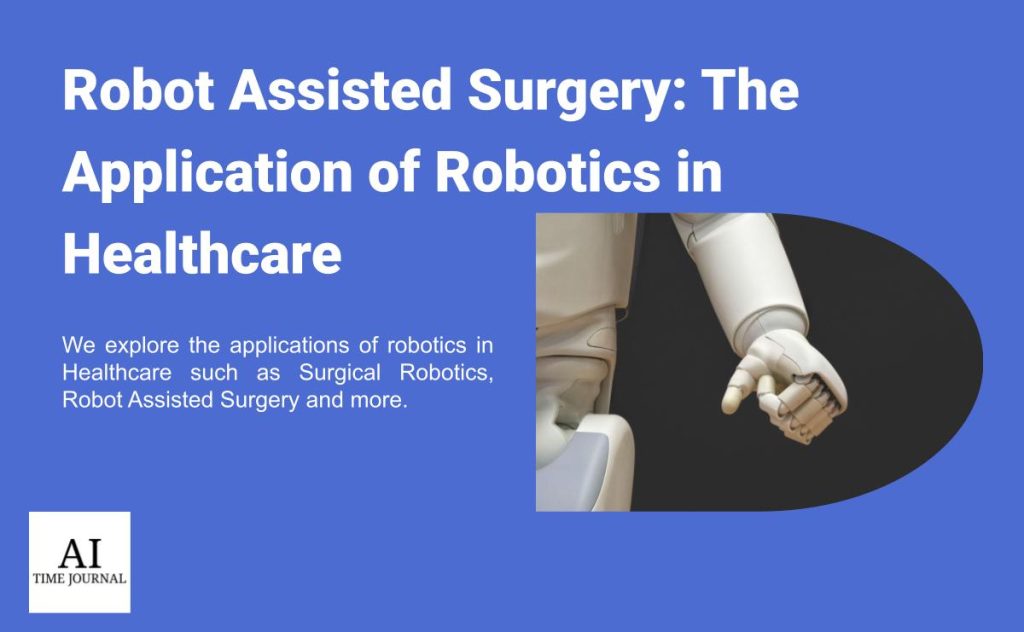
Throughout history, the healthcare field has always been an early adopter of the latest technology to improve the standard of care and show a forward-thinking mindset. Many of the greatest medical tech inventions have come out of innovation in this field.
Services such as telehealth appointments, software that helps uncover patterns in data, and robotic assistance in surgeries and recoveries have all been advancements adopted by professionals in the medical field that have greatly impacted the quality of care patients receive.
Robotic assistance in healthcare encompasses everything from robotic prostheses and exoskeletons to therapeutic robots and surgical assistance robots. Today’s most popular and widely used surgical robotic assistant comes from a company called Intuitive Surgical, Inc. Intuitive is changing the world of medicine with the feats its surgical robot is capable of.
We discuss the origins and potential futures of robot-assisted surgery by taking a look at the world’s leading robotic surgical system: Da Vinci.
For more on how technology is impacting the medical field, check out these AITJ articles: 5 Advantages of Telemedicine in Healthcare and Conversational AI in Healthcare
The History of Surgical Robotics
The concept of robot-assisted surgery has an unusual origin story and dates back to the 1980s. The American Department of Defense partnered with Phil Green, Ph.D., and Joseph Rosen, MD to develop a telepresence surgery system for battlefield injuries. The idea for this system was born from a need to perform immediate life-saving procedures on soldiers injured in combat.
Originally, injuries sustained during combat were attended to by field medics whose primary focus was to stabilize the patient until evacuation to mobile army surgical hospitals (MASH) could be achieved. Hidden or secondary injuries and difficulty transporting injured patients led to increased field casualties. This phenomenon caused the military to recognize the importance of damage control surgery.
Rather than evacuate to the closest MASH and risk worsening injuries, damage control surgery prioritized controlling hemorrhaging and minimizing contamination in the field. This development in battlefield medical practices led to another critical realization: bringing the operating room to the site of the injured was the key to preventing death from major trauma. The Green Telepresence System was then developed as the first surgical robot prototype to assist with remote damage control surgery on the battlefields.
Nearly 30 years after this prototype was introduced to the world, many iterations of this remote surgical device have emerged. Robotic telepresence surgical systems inspired by the Green original have become widely used in cardiac, thoracic, and urology surgeries. These robot-assisted surgeries are known and praised for their minimally invasive nature with less pain and fewer complications. Around the world, Intuitive Surgical, Inc. is pioneering this relatively new surgery concept with its state-of-the-art surgical robot: The Da Vinci System.
The Da Vinci Surgical System
The Da Vinci Surgical System was developed in the late 1990s by Intuitive Surgical, Inc. as a means to perform cholecystectomies, Nissen fundoplications, thoracoscopic internal mammary harvesting, and mitral valve repairs. It was the first robot-assisted surgical system that received FDA approval in the United States, and by the year 2000, it was being used for general surgery.
The entire Da Vinci System operates with three parts: the surgeon console, patient cart, and vision cart. The surgeon console allows the Doctor to remotely guide the surgical instruments on the patient cart, while the vision cart enables communication between the two. The system offers high-definition views of the surgery site that magnifies 10x what the human eye can see, giving the doctor a 3-D view of the surgery. The system also has a built-in tremor filtration feature that allows for smoother operation of instruments and a greater level of control.
There are numerous benefits to operating with the Da Vinci system. The enhanced dexterity and size of the tools make it easy for surgeons to operate through small incisions, providing a minimally invasive procedure for their patients. The use of such an assistant also reduces the likelihood of error or mishap during an operation.
The Da Vinci system can enhance even the best surgeon’s capabilities, beyond a human’s physical limitations. It acts as an extension of their hands and eyes, empowering advancements in medicine that will have a tremendous impact on the future of the medical field.
Future Applications of Robotics in Healthcare
There are still some limitations and disadvantages to this relatively new practice of surgical robotics. Mechanical failure, human operating error, and electrical current burns are all drawbacks to the current concept. Fortunately, advancements in technology are being made every day and have massive potential for translation to the field of robotics.
The Georgia Institute of Technology has a team of researchers working on developing artificial skin for robots. This would give robots the sensation of touch and pressure. This groundbreaking work would allow for a more human experience for patients undergoing surgery, and eventually, even robotic surgeries performed without a human surgeon at all. Currently, there are no independently operating robot surgeons.
However, advancements in artificial intelligence coupled with the incredible power of machines like Da Vinci could potentially introduce the world to the first autonomous robot surgeon. This possibility is a long way off, so for now we look to companies like Intuitive to continue enhancing robot-assisted surgical systems.
